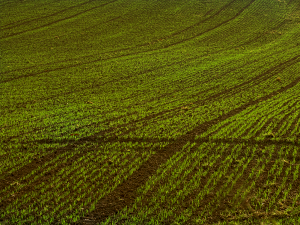 Crop Report Prepared by: Manitoba Agriculture, Food and Rural Initiatives GO Teams & Crops Knowledge Centre
Crop Report Prepared by: Manitoba Agriculture, Food and Rural Initiatives GO Teams & Crops Knowledge Centre
June 18, 2012 |
Northwest Region
Unstable weather conditions, variable humidity and temperatures prevailed across the Northwest Region. General rains and thunderstorms resulted in precipitation ranging from 55 mm up to 100 mm in the Ethelbert and Ste Rose areas. Some hail damage was reported at Ochre River.
While crops were advancing well prior to the rains, crop condition is now being impacted by the excess moisture conditions. More fields now have water ponding and 50 to 75% of soils are considered saturated. Crop yellowing and plant death is evident where the greatest precipitation has occurred over the previous two weeks.
Winter wheat is flowering. Approximately 5 to 10% of spring wheat and barley acres are into flag and heading stages. Some early seeded canola is beginning to early flower while 25 to 35% of acres are in the rosette stages. Field peas are into vegetative stages. Soybeans range from second to fourth trifoliate stages.
Spraying operations throughout the region were sporadic and hampered by poor weather and field conditions. Approximately 80% of the cereal acres have been sprayed for weeds and 75% of the canola acres have received first pass herbicide applications. Improved field and weather conditions are needed for proper application timing. When conditions allowed, fungicides were being applied on winter and spring wheat. Aerial application is more prevalent. Early in the week, flea beetle activity continued along with cutworm treatments on canola and hemp. Diamondback moth trap counts are increasing in the Ethelbert and Fork River locations.
Hay crops and pastures are in good condition. Initial first cut dairy hay had just begun prior to the rains. Yields are expected to be average to below average. Warmer weather would be welcomed for continued growth. Dugouts are now full. Increased runoff to streams is adding to lake inflows and some flood prone, low lying native hay lands adjacent to the lakes are being impacted.
